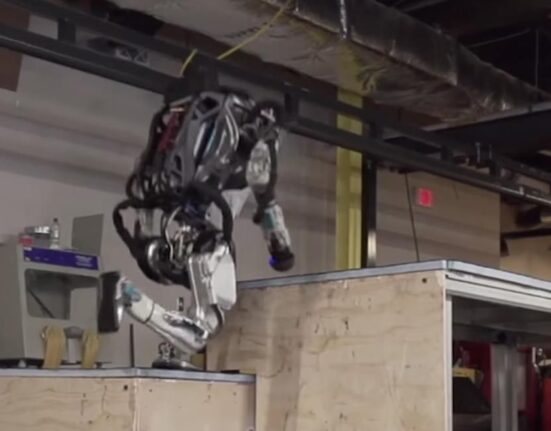Soft robotics, a cutting-edge field in robotics, is changing the game with its flexible and lifelike movements that mirror those of living organisms. Unlike traditional rigid robots, soft robots are made from materials that allow them to bend, twist, and adapt to various environments seamlessly. Imagine a future where these tiny but mighty machines play a crucial role in saving lives during emergencies or offering groundbreaking medical treatments.
Huanyu “Larry” Cheng, an expert in Engineering Science and Mechanics at Penn State University, sheds light on the challenges faced in developing intelligent soft robots. In a recent study published in Nano-Micro Letters, Cheng emphasizes the necessity of making these robots “smart.” Until now, most soft robots have operated as one-way communication systems reliant on external control. However, Cheng’s team aimed to change this by integrating smart sensors into the robots’ design. This innovative approach allows the robots to interact autonomously with their surroundings, reducing the need for constant human intervention.
“The biggest challenge really was to make it smart.”
Integrating flexible electronics into the delicate structure of soft robots was a pivotal step towards enhancing their capabilities. Traditional rigid electronics presented a significant hurdle due to their lack of flexibility. To address this issue effectively, Cheng’s team strategically dispersed electronic components within the robot’s framework while maintaining its essential flexibility and performance standards.
“We wanted to design a system where soft robotics and flexible electronics work together seamlessly.”
Visualizing these remarkable creations in action brings awe-inspiring moments as they navigate through obstacles with ease. The videos captured by Cheng’s team showcase the dynamic behavior of these robots as they crawl or roll into compact shapes for efficient movement along predefined paths. Their mobility is powered by hard magnetic materials integrated within their flexible bodies – allowing precise control through external magnetic fields without requiring onboard power sources or physical connections.
Overcoming technical hurdles such as electrical interference proved crucial in ensuring optimal performance of these advanced robotic systems. Designing the electronic layout meticulously helped minimize disruptions caused by external factors like magnetic fields or wireless signals that could potentially impede the robot’s functionality.
“Even though we designed the electronics to be flexible…we distributed [them] across the structure…”
As these intelligent soft robots evolve further, their application potential expands exponentially across diverse fields such as healthcare and disaster response scenarios. In search-and-rescue missions, they exhibit remarkable autonomy by detecting environmental cues like heat signatures or obstacles amidst debris – showcasing their ability to operate efficiently even in challenging conditions.
Medical applications hold immense promise for these versatile machines as well. By leveraging integrated sensors capable of responding to specific stimuli like pH levels or pressure changes within the body, they pave the way for precise drug delivery mechanisms and accurate sample collections – revolutionizing conventional medical procedures.
The horizon looks promising for Cheng’s team as they envision groundbreaking applications for their innovative technology – including developing what they refer to informally as a “robot pill.” This miniature marvel holds potential for transformative biomedical use cases such as navigating through intricate bodily pathways like gastrointestinal tracts with exceptional precision.
“Imagine a small robotic system that could be swallowed like a pill…detect diseases or deliver drugs precisely where they’re needed.”
Suk-Won Hwang from Korea University envisions how these advancements could lead to less invasive diagnostic procedures and targeted treatments tailored specifically to individual patient needs. The prospect of utilizing sophisticated robotic systems inside blood vessels opens up new frontiers in vascular treatments aimed at addressing cardiovascular diseases directly at affected sites without invasive surgeries – marking a significant leap towards non-invasive medical interventions.
With each breakthrough propelling them closer to transformative applications in healthcare and beyond, Cheng invites collaboration from all quarters – including suggestions for naming these futuristic creations.








Leave feedback about this